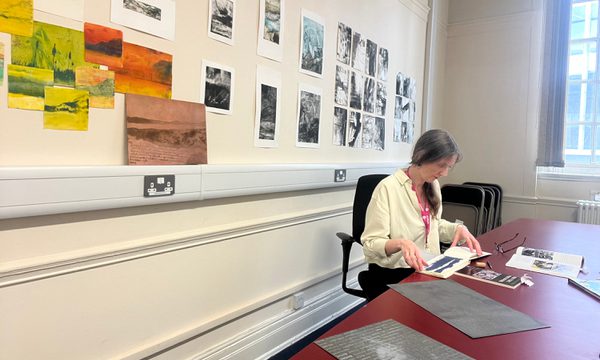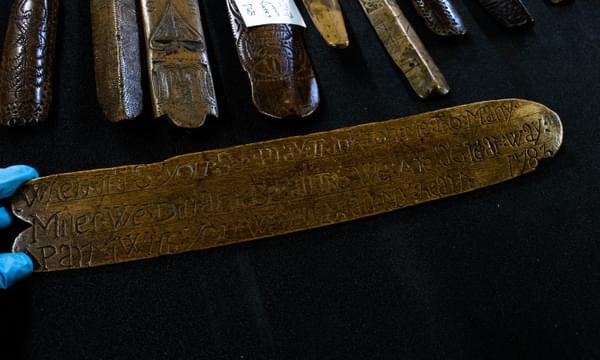News Story
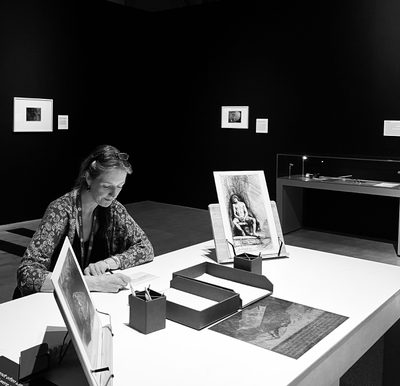
My name is Fae Kilburn, a visual artist specialising in printmaking. Currently near the end of a six month fellowship at Birmingham Museums & Art Gallery.
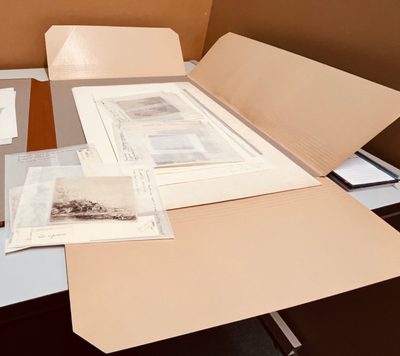
As I stood in the archive unconsciously holding my breath as I unwrapped the tiny Rembrandt print. It seemed so small and fragile, unmounted and unframed, held in the palm of my hand. I looked at all the etched marks that I’ve never been able to get close enough to see before. I was captivated at how a series of Drypoint lines could be so unique.
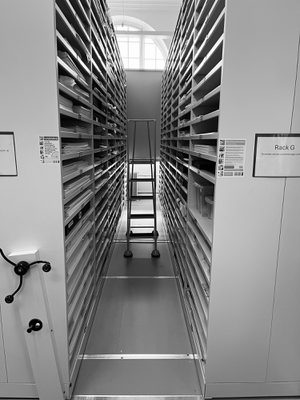
Being in Birmingham Museum & Art Gallery’s archive has enabled me to see that each printmaker had their own way of creating light and shade, some were more expressive than others. Their artistic etching marks were just as unique as someone's handwriting. This was really exciting for me, something I had technical knowledge of but had never physically seen. As an artist getting the opportunity to go behind the scenes of a gallery and spend time in the archives, with a curator is a dream. (Thank you to Felicity McWilliams for her time).
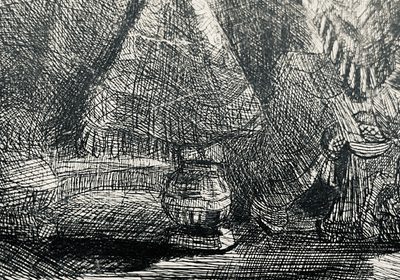
Rembrandt is known for his small detailed etchings, his mark making is very expressive and his prints are often dramatic with high contrast of light and dark, creating different moods and drawing the viewer in.
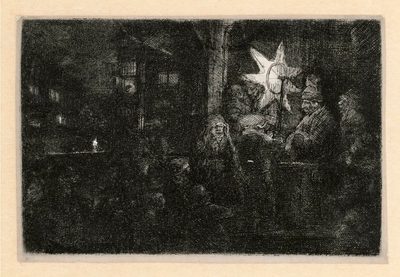
People say he intentionally left excess ink on the plate to add atmosphere, but what if like me he couldn’t always tell if it was clean and the excess ink is a happy accident, due to his deteriorating sight? My prints often have extra character due to my fluctuating vision and from a young age I was drawn to making high contrast images, as most printmakers are, but for me it was also how I saw the world in light and shade rather than small details.
As an artist Rembrandt was not using printmaking merely as a way to reproduce his paintings but rather as an art form in its own right. His etchings are works of art and a form of artistic self expression a departure in the way printmaking had been used up until then, for me this is a glorious celebration of printmaking, a process that doesn’t get the recognition it truly deserves within the fine art world.
During my fellowship I had the pleasure of sitting and creating printing plates in the Rembrandt exhibition. I had a selection of them for people to touch, from traditional copper plates, to zinc, steel, Perspex and Drypoint card. I also had sample materials and tools for people to try the process of Drypoint.
As a socially engaged artist this was a wonderful opportunity to interact with the public, talk about the research I was doing during my fellowship, into historical disabled artists and how their disability informed their practice, discuss printmaking in great detail for hours and encourage people of all ages to try it.
One person asked me if etching was an intellectual or emotional process, a question I’ve never been asked before. For me personally it’s both, I’m passionate about the process and nearly all the work I create I have an emotional connection to. I believe you really have to love printmaking to stick with the process because there is so much preparation and sometimes things don’t work out as you’ve planned, and rather than get disheartened it’s best to learn from the experience. I believe that etching is also an intellectual process as well as emotional because you're constantly thinking in reverse as well as working in negative, everything you want light you have to cover with a dark ground and everything you want dark you expose. You also have to think about how the acid will react to the metal, think about your timings and sometimes 30 seconds makes all the difference between over or under etching.
This unexpected opportunity of working in the Rembrandt: “Masterpieces in Black and White” exhibition not only enabled me to be in a creatively stimulating environment and connect with the public, it also enabled me to get to know different members of the Birmingham Museum & Art Gallery staff and feel part of the team.
Thank you to everyone who came and spoke to me during the exhibition, sharing their passion for art and their personal lived experience of disability.
By Fae Kilburn,
Artist in Residence.
